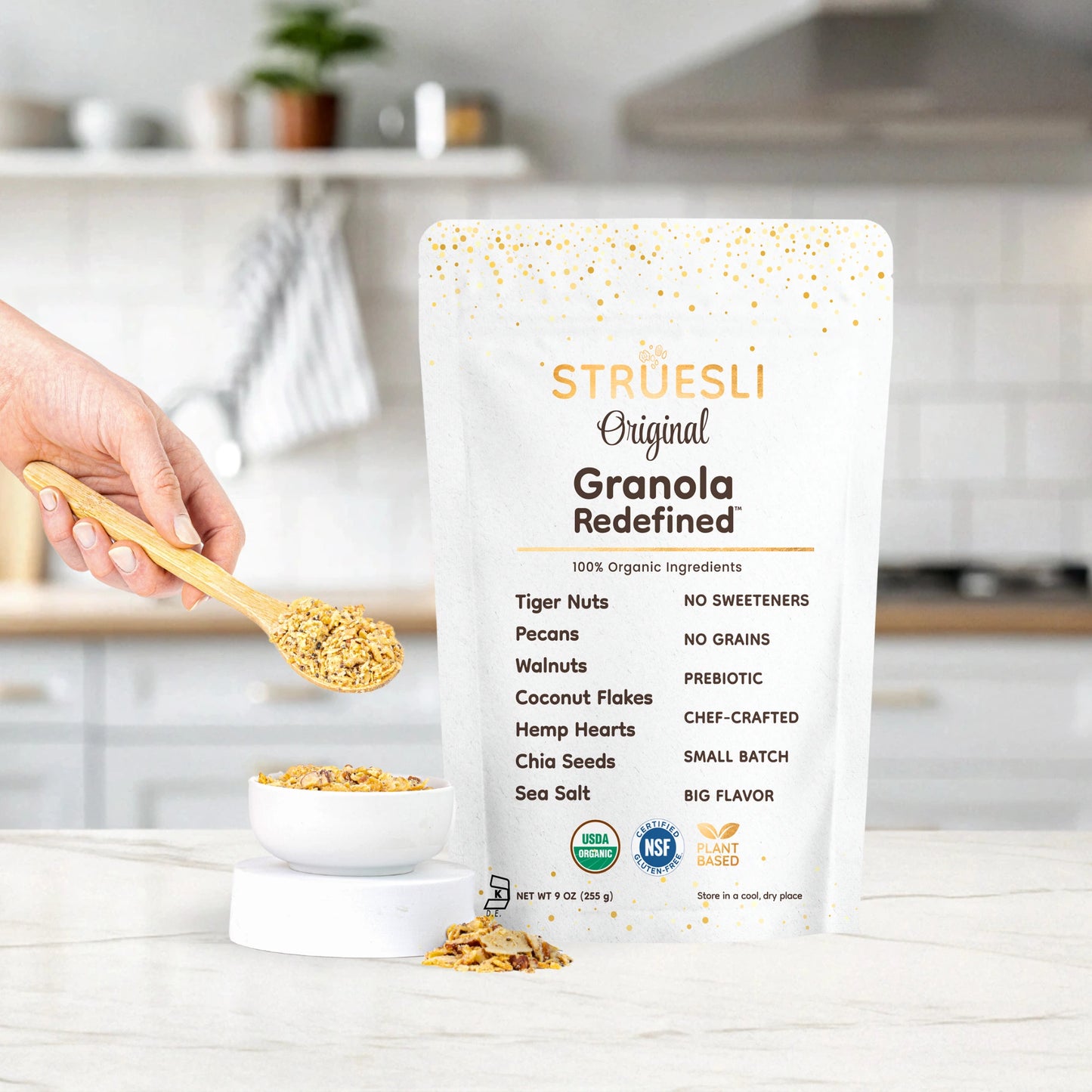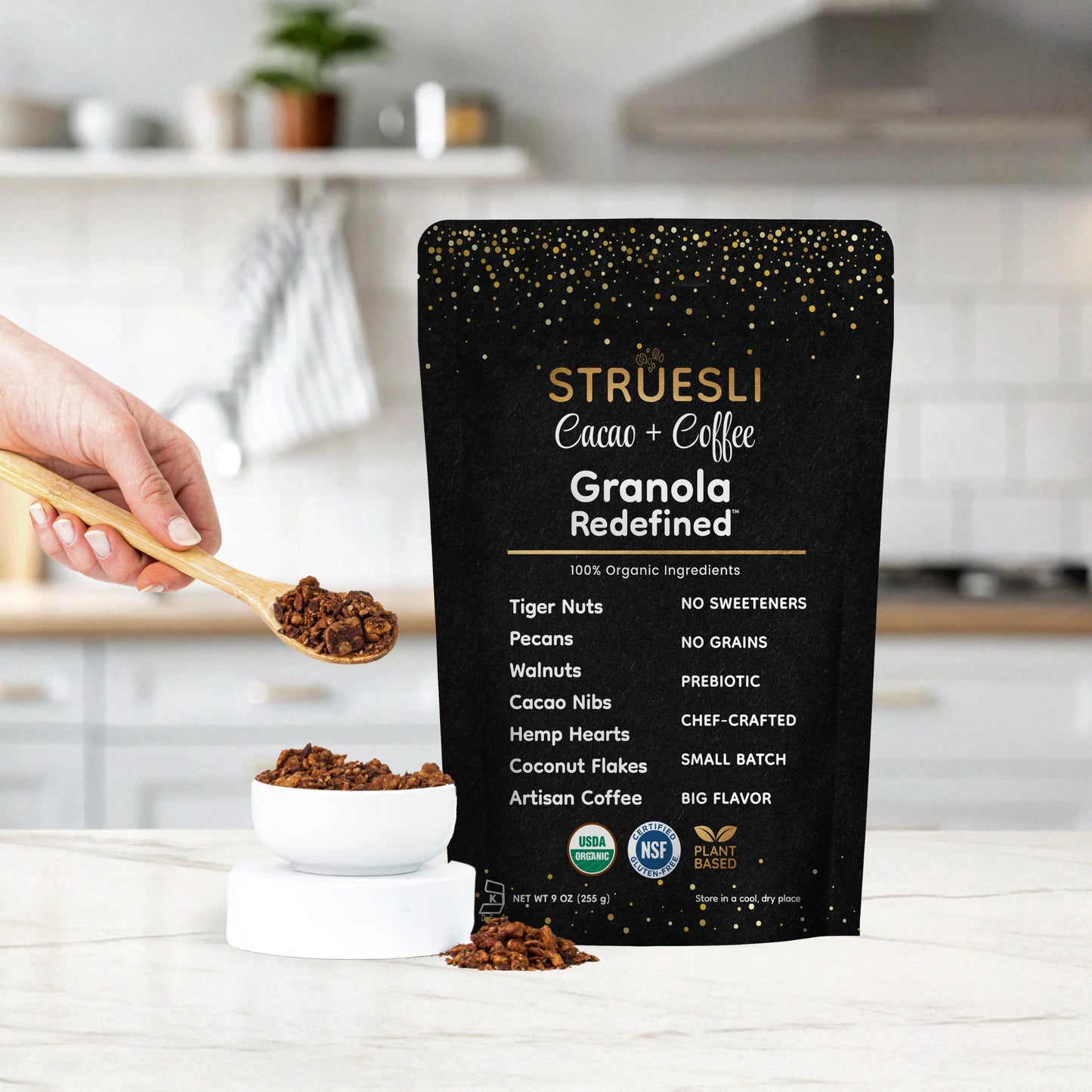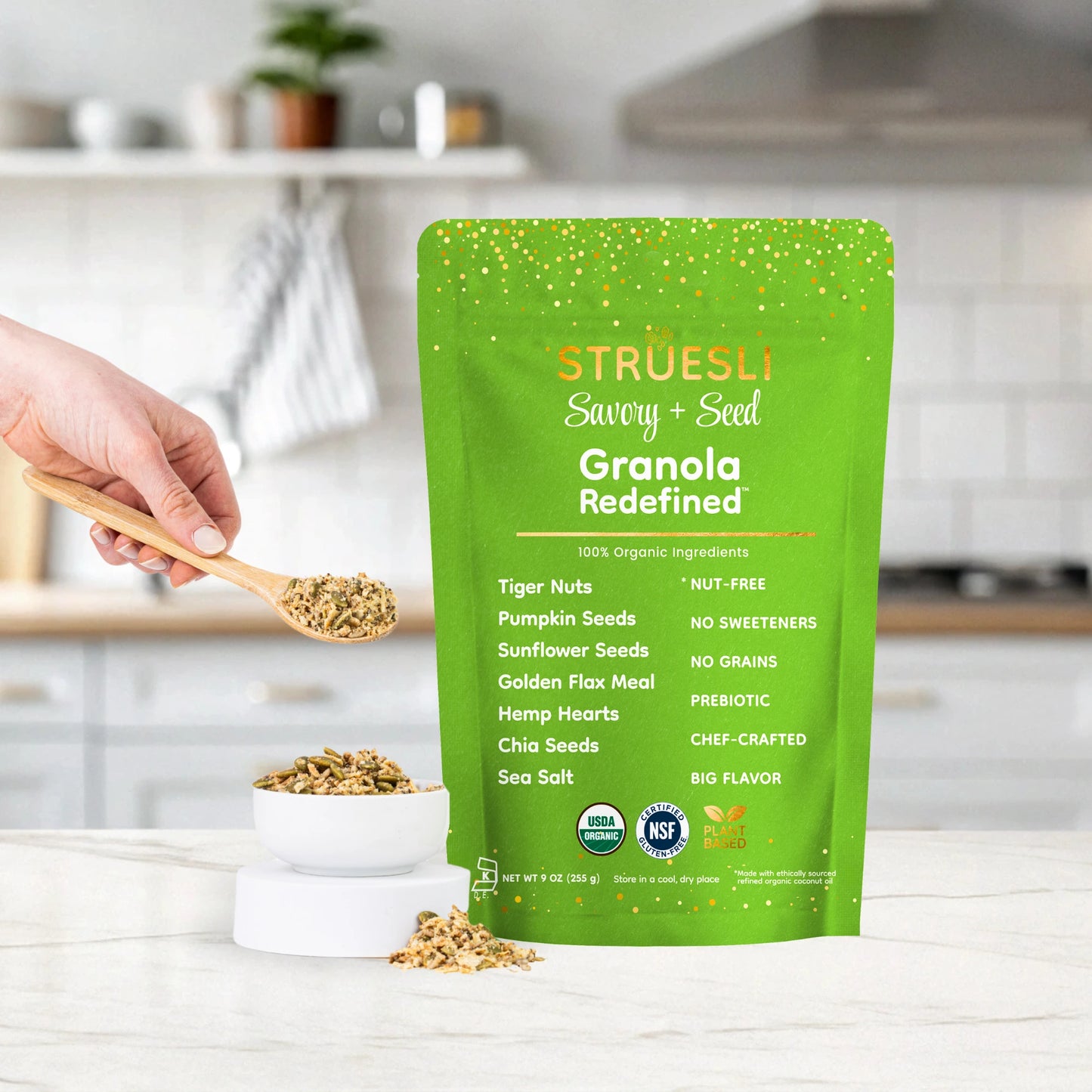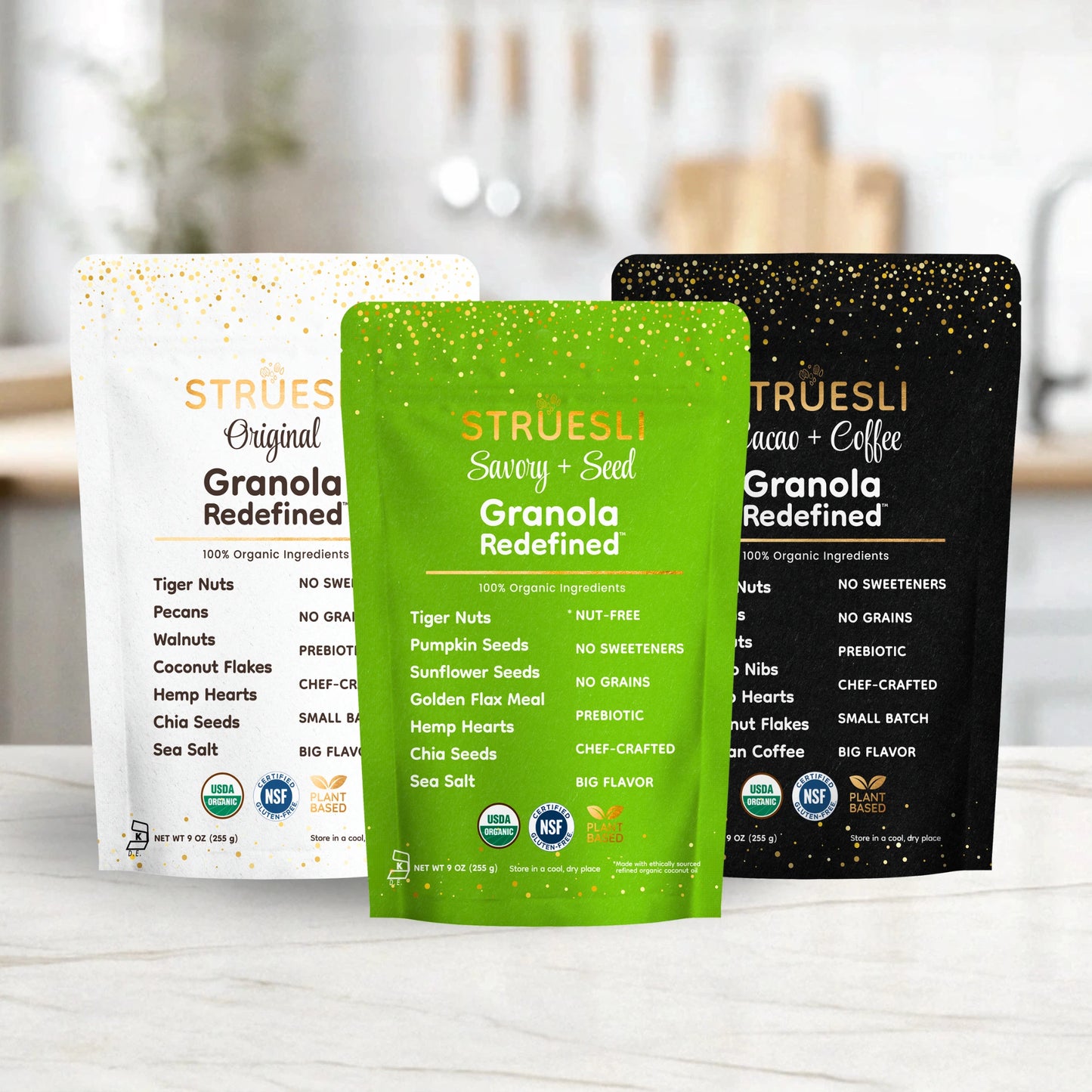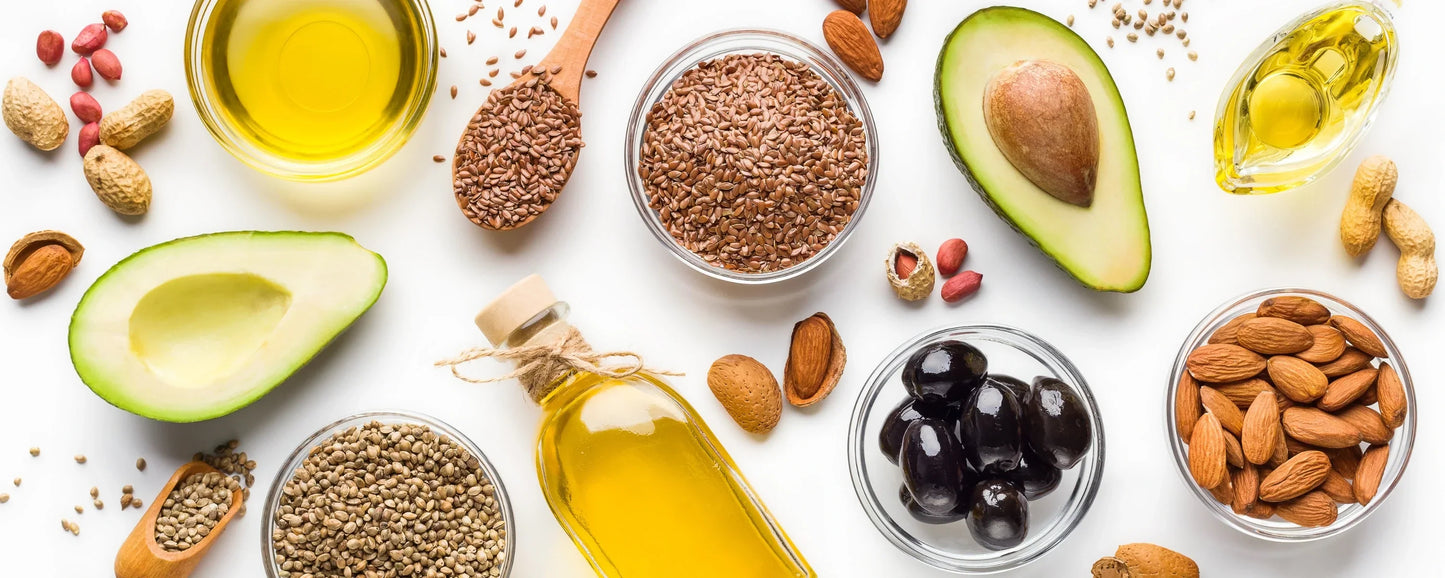
You've probably heard of omega 3s and know that they're a type of good-for-you fat. So if omega 3s are good, it would stand to reason that omega 6s are doubly good ... but the opposite is actually true.
Omega 3 fatty acids and omega 6 fatty acids are two types of essential polyunsaturated fats that you need to get from food. Both have benefits, but omega 3s are the one you need more of.
Omega 3 and Omega 6 Benefits
As a group, polyunsaturated fats have several key benefits. They mainly provide you with energy and also have been scientifically linked to anti-inflammatory effects, having protective compounds to guard against several diseases, including osteoarthritis, cancer, and autoimmune disorders.
Polyunsaturated fats are good-for-you fats that your body needs. The two most known and most available types of polyunsaturated fats are omega 3 and omega 6 fatty acids. Within those types, there are several subtypes and each offers unique benefits.
Types Of Omega 3 Fatty Acids
- Eicosapentaenoic acid (EPA): This healthy fat releases chemicals, called eicosanoids, that help reduce chronic inflammation. It has also been linked to reduced symptoms of depression.
- Docosahexaenoic acid (DHA): This fatty acid contributes greatly to brain development and improved brain function.
- Alpha-linolenic acid (ALA): This fatty acid comes from omega 3 foods vegetarian in nature, such as seeds, beans, and nuts. It contributes to heart, immune, and nervous system health.
Types Of Omega 6 Fatty Acids
-
Linoleic acid (LA): This fatty acid is the one we get the essential fatty acid we get the most from foods. It helps maintain the water permeable barrier of the skin. It's also a precursor to other fats that help regulate inflammation and maintain receptors in the brain.
-
Arachidonic Acid (ARA): This fatty acid makes up many cell membranes, especially those in the nervous system, skeletal muscle, and immune system. Though high intakes of it have been linked to increased inflammation markers.
-
Gamma linoleic (GLA): This fatty acid supports healthy, hydrated skin and helps resolve cellular stress, similar to omega-3 fats. It also reduces the synthesis of pro-inflammatory ARA.
- Conjugated linoleic acid (CLA): This type of fatty acid has been connected to fat loss and a reduction in precursors to inflammation.
Is One Better Than The Other?
Here's the short of it: Not really. Both monounsaturated fats and polyunsaturated fats are good for you. But you could probably stand to get more monounsaturated fats.
And here's the detailed answer to that question: When isolated as singular fatty acids, all polyunsaturated fats (including omega 3s and omega 6s) have proven benefits for the body, ranging from fighting inflammation to improving cell structure to skin health and fat loss. But foods don't contain just singular amounts of any type of fat. Rather, fat-containing foods all have a unique fat structure, containing several types of saturated and unsaturated fats in different amounts.
Dietary recommendations center around how much total fat (a combination of both unsaturated and saturated fat) is recommended for optimal health - for most people, it falls somewhere in the range of 20% to 35% of their total daily calories. Further, scientists and nutritionists have found that diets that get more unsaturated fats (versus diets that are made up of mostly saturated fats) have been linked to health benefits, including better blood cholesterol levels and fewer inflammatory disease markers.
Sometimes you will see these fats pitted against each other (ie: omega 3 vs 6), as if they are in competition with one another. That's because, as our diets have evolved over the last 100 years, the ratio of omega 3 fats to omega 6 fats that people typically get has changed from around 1:4 to somewhere closer to 1:17.
The current typical western diet, which contains a lot of highly processed foods made with corn oil, soybean oil, and safflower oil (all very high in omega 6s) has contributed to the increase in that ratio. Further, most livestock eat a grain-based diet of corn and soybeans, increasing their omega 6s and reducing their omega 3s, which also changes the fat composition of the meat we eat from grain-fed animals.
5 Strategies To Ensure You're Getting Healthy Fat Ratios
It's impossible to eat only one type of fat, nor should you. Every type of fat that you can get naturally from foods (saturated, monounsaturated, and polyunsaturated) plays a role in your health. When it comes to getting better ratios of these essential fats, try these strategies:
- For animal proteins, opt for more marine sources (seafood and fish high in omega 3) and pick grass-fed beef when you can
- For cooking oils, opt for olive oil or avocado oil over vegetable oils like corn or soybean oil
- Opt for whole food snacks based on avocado, seeds, olives, nuts, nut butters, and soybeans (such as edamame and roasted chickpeas)
- Swap highly processed snacks made with sunflower oil, safflower oil, or cottonseed oil in favor of snacks made with avocado oil or coconut oil
- If you don't eat much fatty seafood, consider adding a high-quality omega-3 supplement to your routine
Foods With Omega 3s
Some very high omega 3 foods include fatty fish, seeds, and nuts. Grass-fed beef, seaweed, edamame, and kidney beans also contribute some omega 3s to your diet.
Foods with the most omega 3s are:
- salmon
- mackerel
- sardines
- anchovies
- chia seeds
- walnuts
- flaxseeds
Omega 6 Rich Foods
The categories of foods high in omega 6 are most plant-based oils, nuts, and seeds. Eggs, beef, pork, and seafood also contribute some omega 6s to your diet.
The highest omega 6 foods are:
- soybean oil
- corn oil
- mayonnaise
- walnuts
- sunflower seeds
- almonds
- cashews
Struesli Has Both Omega 3s and Omega 6s
Foods that contain BOTH omega 3s and omega 6 fatty acids are those with nuts, seeds, tiger nuts, soybeans, eggs, or seafood.
Struesli contains several of those foods - being based on tiger nuts, walnuts, pecans, and seeds, like chia and flax - which means it contains a good amount of both of these essential polyunsaturated fats. It's a food high in omega 6 and omega 3 fatty acids and something you can count on to provide you with fat ratios that promote optimal health.
Written by Jessie Shafer, RD
May 30, 2024

